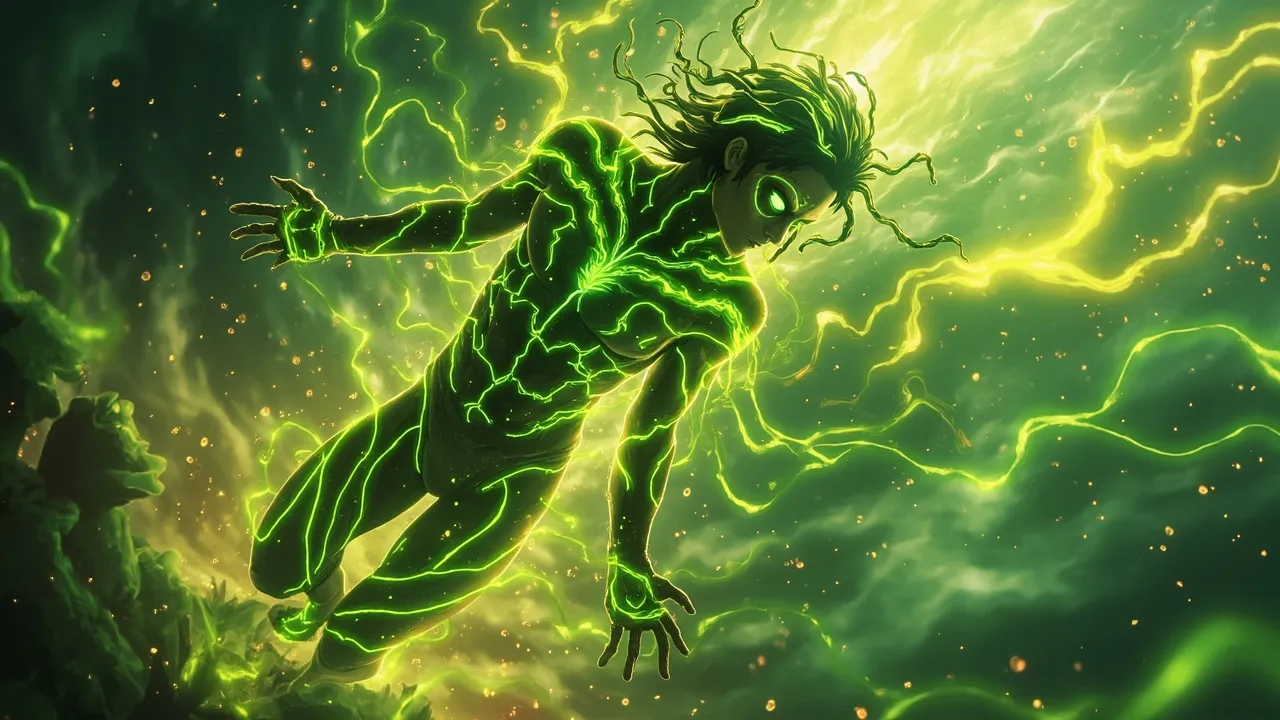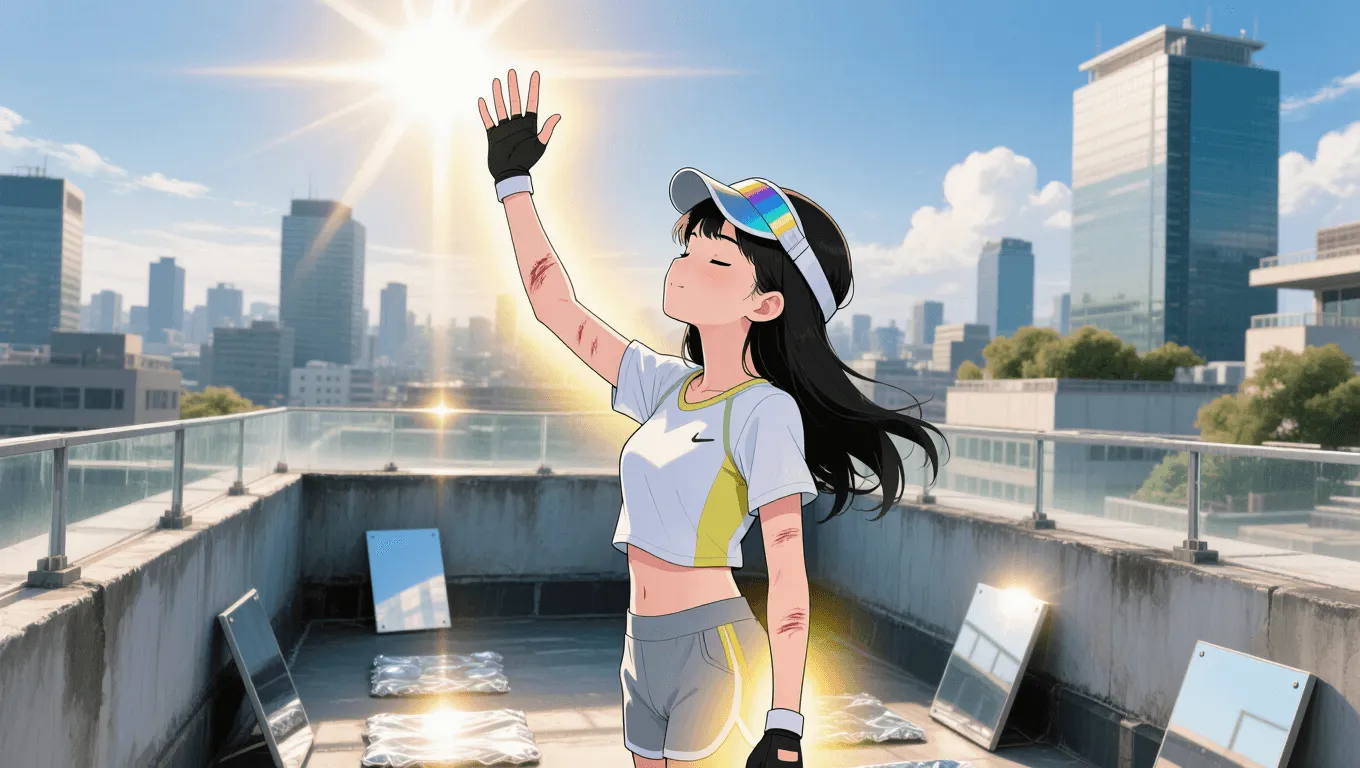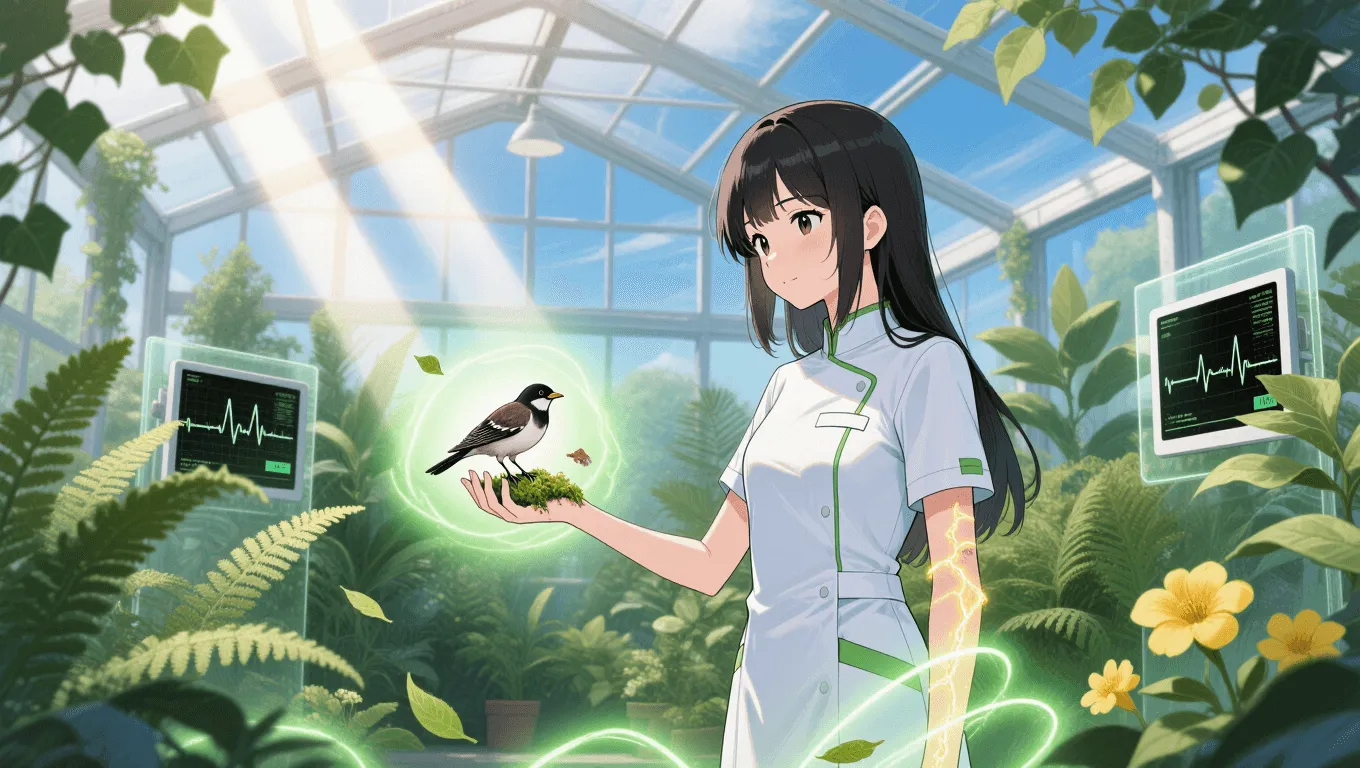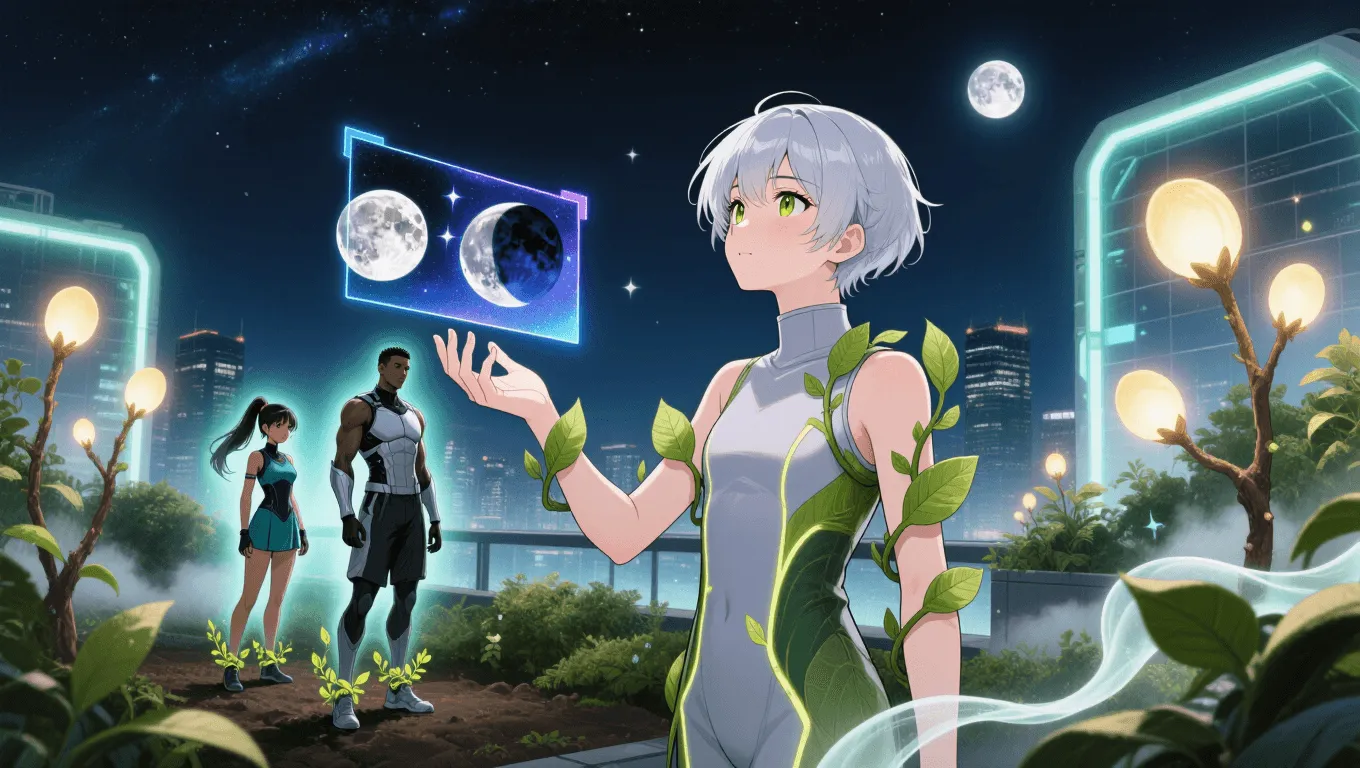Photosynthetic Healing

Photosynthetic Healing Video Demo 🎬
Table of Contents
- Photosynthetic Healing Video Demo 🎬
- What Is Photosynthetic Healing
- Core Abilities of Photosynthetic Healing
- Application / Tactical Advantages in Combat
- Level: Level 1 🏙️, Level 2 🌇, Level 3 🌃
- Limitations of Using the Photosynthetic Healing
- Weakness Against What Other Superpowers
- Synergistic Power Combos
- Known Users
Photosynthetic Healing is a nature-based power where living tissue restores itself by converting light—usually sunlight—into biological energy. Users metabolize photons like a plant, triggering rapid cell repair, toxin breakdown, and even regrowth of damaged structures. In many universes, this solar-powered healing overlaps with botanical physiology, chlorokinetic regeneration, and light-based vitality. If you’re building a character or browsing similar abilities, explore the complete catalogue on our Superpower Wiki and try a spark of inspiration with the Random Superpower Generator.
What Is Photosynthetic Healing
At its core, Photosynthetic Healing merges plant-like photosynthesis with animal physiology. Instead of eating calories to fuel recovery, the user harvests ambient light—sunlight, moonlight reflections, or engineered biophotonic sources—and converts it into ATP-like energy that fuels accelerated regeneration. Depending on the character’s biology, the process may require a chlorophyll analog, bio-solar pigments, or symbiotic flora growing within or upon the skin. In narrative terms, this makes the user extraordinarily durable by day, strategically vulnerable at night or underground, and surprisingly potent on verdant battlefields.
The power scales across settings—from mild sunlight-assisted recovery to battlefield triage and limb regrowth under intense illumination. While commonly associated with plant-themed heroes, Photosynthetic Healing also appears in solar champions whose cells behave like living solar panels. Alternate terms and related keywords include solar healing factor, regenerative photosynthesis, plant-based regeneration, biophotonic healing, and chloroplast-inspired recovery.
Core Abilities of Photosynthetic Healing
Photonic Absorption
The user absorbs photons through skin, leaves, tendrils, or bio-solar patches. This energy fuels rapid wound closure, accelerates collagen synthesis, and restores stamina. In strong daylight, recovery feels instant; in dim conditions, it slows but may still function if a minimal light threshold is met.
Rapid Tissue Regeneration
Cuts seal in seconds, bruises vanish, and fractured bones knit with remarkable speed once adequately illuminated. Advanced practitioners can regenerate complex structures—cartilage, nerves, even partial organs—when bathed in concentrated light or specialized grow lamps.
Detoxification and Purification
Photosynthetic biochemistry excels at neutralizing toxins and radiation by-products. Metabolic pathways convert harmful compounds into inert or excretable forms, functioning like a living phytoremediation system. This grants resistance to many venoms and pollutants—especially plant-derived toxins the user’s system recognizes.
Oxygenation Boost
As a byproduct, users may release oxygen, stabilize their breathing under stress, and enhance nearby allies’ endurance in enclosed or smoky environments. Some generate a calm, verdant microclimate that reduces fatigue across a squad.
Healing Aura (Advanced)
Elite users project a localized photosynthetic field, sharing light-charged energy with teammates. The aura accelerates clotting, relieves shock, and stabilizes vital signs—most effective under sunlight or focused illumination.
Regenerative Stasis
When catastrophically injured, the user can enter a seed-like dormancy, minimizing metabolic needs until light returns. In this state, they resist infection and slowly rebuild critical tissue.
Biomass Integration (Variant)
Plant-centric users may graft living vines, bark plates, or moss-like biofilms onto wounds as temporary scaffolds. These living bandages photosynthesize in place, knitting injuries from the outside in.
Application / Tactical Advantages in Combat
Daylight Dominance
Open-field or rooftop operations under a clear sky dramatically tilt the odds. The user soaks up solar energy while fighting, turning attrition battles into endurance clinics. Sustained skirmishes favor a combatant who heals faster than opponents can inflict damage.
Sustain and Tempo Control
Photosynthetic Healing lets teams push longer without medical evac. The user can patch themselves between exchanges or pulse a healing aura to bring allies back to fighting capacity, maintaining tempo during sieges or escort missions.
Environmental Synergy
Forests, botanical gardens, glass atriums, deserts at high noon—anywhere drenched in light becomes a mobile clinic. Plant-aligned users can couple regeneration with chlorokinesis, using vines for cover while sunlight fuels continuous recovery.
Counter-Toxin Specialist
Against poisoners or corruption-based enemies, the detox pathways shine. A photosynthetic healer can absorb or neutralize contaminants, clear gas-lit rooms by boosting oxygen, and stabilize allies suffering from venom or radiation exposure.
Siege Breaking and Rescue
During rescues in damaged structures, oxygen release improves survivability for trapped civilians, and rapid self-healing allows the healer to bulldoze through hazardous pathways without pausing for treatment.
Resource Efficiency
Unlike conventional healing factors that demand huge caloric intake, sunlight is plentiful and renewable. With proper positioning—rooftops, reflective drones, or light amplifiers—the healer becomes nearly self-sustaining.
Level: Level 1 🏙️, Level 2 🌇, Level 3 🌃
Level 1 🏙️: Sun-Kissed Recovery

Beginners exhibit mild, sunlight-dependent regeneration. Minor cuts, sprains, and fatigue clear within minutes when basking. In shade or at night, healing reverts toward normal human rates unless exposed to artificial grow lights. The user learns to position themselves for maximum exposure—choosing bright vantage points, reflective surfaces, and light-friendly gear.
Key traits:
-
Noticeable stamina returns after short sunbaths
-
Surface wounds close quickly; bruises fade within hours
-
Sensitivity to cloud cover and deep shade
-
Basic toxin resistance to mild environmental contaminants
Level 2 🌇: Verdant Medic

Intermediates unlock faster tissue repair and basic aura effects. They can stabilize allies, regenerate moderate injuries, and purge common poisons even at dusk or under city lights. With portable lamps or solar drones, battlefield triage becomes routine.
Key traits:
-
Fractures mend in hours under steady light
-
Detox clears many venoms; heavy metals require prolonged exposure
-
Limited healing aura accelerates clotting and reduces shock
-
Dormancy stasis activates for survival after severe trauma
Level 3 🌃: Living Photosynthesis Engine

Masters synthesize energy from faint ambient light, lunar reflections, starlight magnifiers, or custom-spectrum LEDs. Regeneration approaches mythic levels: regrowth of complex structures, organ stabilization, and team-wide aura fields in broad daylight. Environmental control may extend to shaping microclimates—cooling hotspots, humidifying air, and saturating an area with revitalizing oxygen.
Key traits:
-
Near-instant recovery in full sun; rapid limb/organ reconstruction under amplified light
-
Robust immunity to most poisons and disease agents
-
Expansive healing aura that sustains squads during prolonged engagements
-
Seed-state regeneration after catastrophic injury, re-blooming when illuminated
Limitations of Using the Photosynthetic Healing
Light Dependency
The power’s engine is light. Underground, inside fortified bunkers, during eclipses, or in tech-suppressed zones, healing slows dramatically unless the user can deploy lamps or reflective rigs. Overconfidence in dark or hostile environments invites disaster.
Line-of-Sight and Spectrum Specificity
Some users require direct, unfiltered sunlight; others depend on specific wavelengths (red/blue grow-light bands). Heavy smog, soot, or energy-dampening fields can cripple regeneration by altering the spectrum or intensity.
Hydration and Nutrient Needs
Even with photonic energy, biological repair requires water and substrates—amino acids, minerals, trace elements. Dehydration or nutrient depletion throttles regeneration. Smart operators carry hydration packs and mineral gels to prevent “dry wilt.”
Thermal and Fire Risks
Plant-like tissues may desiccate under extreme heat. Overexposure without cooling can scorch photosynthetic surfaces, temporarily reducing efficiency until repaired.
Time-to-Heal for Complex Damage
While cuts seal fast, nerve networks and intricate organs still need time and sustained illumination. Portable lamps mitigate this but create logistical overhead.
Overgrowth and Scarring (Variants)
Some users risk uncontrolled callus-like bark growth or vine scarring if they overcharge regeneration. Fine motor tissues might require careful “pruning” to heal correctly.
Weakness Against What Other Superpowers
Darkness Generation / Shadow Manipulation
Opponents who cloak zones in supernatural darkness immediately undercut photon supply, collapsing the healer’s advantage.
Energy Dampening / Nullification
Fields that suppress bio-energy or convert light to heat negate the conversion pathway, slowing or halting recovery.
Cryokinesis and Cold Domination
Severe cold reduces metabolic reaction rates and constricts fluid transport, delaying regeneration and risking frost damage to photosynthetic tissues.
Pyrokinesis and Thermal Overload
Intense flames scorch living tissue and denature pigments. Without rapid rehydration and light afterward, healing lags.
Acid/Corrosion and Necrotic Energies
Caustic compounds outpace detox pathways; necrotic or anti-life energies disrupt cell division and can bypass normal regeneration safeguards.
Electromagnetic Interference (Targeted)
Precise EM disruption at photosynthetic resonance frequencies can jam light conversion, akin to scrambling a solar inverter.
Synergistic Power Combos
Chlorokinesis + Photosynthetic Healing
Control over plants pairs naturally with solar regeneration. Vines form instant tourniquets while sunlight fuels repair. The user can also cultivate medicinal flora on demand.
Light Manipulation / Solar Amplification
Teammates who bend or intensify light effectively become on-call medics’ medics—turning alleys into operating rooms and night ops into daylight-equivalent triage.
Hydrokinesis / Watercraft
Water controllers provide hydration and cooling, keep photosynthetic surfaces pristine, and even refract light for wider coverage.
Earth Manipulation / Terrain Shaping
Earth-shapers raise reflective stone platforms, clear roofs, or open skylights to flood engagement zones with sun, maximizing healing throughput.
Biokinesis / Cellular Control
Fine-tuning cell division improves scarless regrowth, nerve reconnection, and organ patterning—reducing the risk of overgrowth or mishealed structures.
Wind/Air Control
Aerokinetics circulate fresh air and distribute oxygen produced by the healer’s aura, improving team stamina and reducing smoke inhalation risks.
Tech Support: Drones and Grow Lamps
Portable solar drones, mirrors, and spectrum-tuned LEDs keep the healer online through tunnels, night raids, or storm cover—transforming environmental weaknesses into solvable engineering problems.
Known Users
-
Groot — A sentient, tree-like being famed for remarkable regrowth and plant-based resilience across multiple storylines.
-
Swamp Thing — An avatar of the Green whose botanical body often reforms from devastation, showcasing nature-driven restoration.
-
Poison Ivy — Frequently depicted with plant symbiosis and regenerative aspects tied to her connection with flora and sunlight.
-
Man-Thing — A swamp-born entity with plant-matter physiology that can reconstitute after severe damage.
-
Krakoa — A living mutant island whose vast, photosynthesis-linked biology demonstrates ecosystem-scale regeneration.
To explore related abilities and find your next idea, visit the complete Superpower Wiki or spin up a surprise concept with the Random Superpower Generator.
